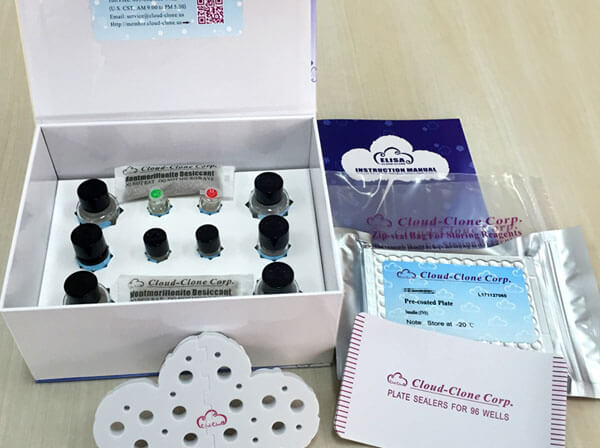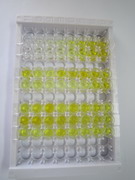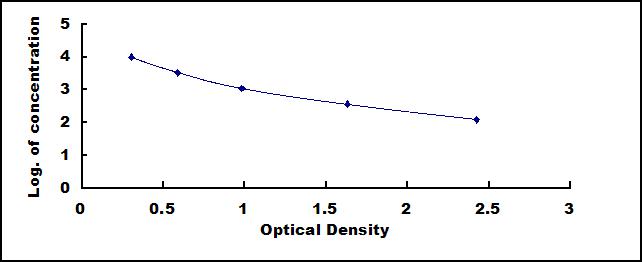ELISA Kit for Androstenedione (ASD) 

4-Androstenedione; 4-Androstene-3,17-Dione
- UOM
- FOB US$ 557.00 US$ 796.00 US$ 3,580.00 US$ 6,763.00 US$ 55,692.00
- Quantity
Overview
Properties
- Product No.CEA456Ge
- Organism SpeciesPan-species (General) Same name, Different species.
- ApplicationsEnzyme-linked immunosorbent assay for Antigen Detection.
Research use only - DownloadInstruction Manual
- CategoryEndocrinologyReproductive scienceHormone metabolism
Sign into your account
Share a new citation as an author
Upload your experimental result
Review

Contact us
Please fill in the blank.
Recovery
Matrices listed below were spiked with certain level of Androstenedione (ASD) and the recovery rates were calculated by comparing the measured value to the expected amount of Androstenedione (ASD) in samples.
| Matrix | Recovery range (%) | Average(%) |
| serum(n=5) | 88-102 | 98 |
| EDTA plasma(n=5) | 83-90 | 86 |
| heparin plasma(n=5) | 81-95 | 90 |
Precision
Intra-assay Precision (Precision within an assay): 3 samples with low, middle and high level Androstenedione (ASD) were tested 20 times on one plate, respectively.
Inter-assay Precision (Precision between assays): 3 samples with low, middle and high level Androstenedione (ASD) were tested on 3 different plates, 8 replicates in each plate.
CV(%) = SD/meanX100
Intra-Assay: CV<10%
Inter-Assay: CV<12%
Linearity
The linearity of the kit was assayed by testing samples spiked with appropriate concentration of Androstenedione (ASD) and their serial dilutions. The results were demonstrated by the percentage of calculated concentration to the expected.
| Sample | 1:2 | 1:4 | 1:8 | 1:16 |
| serum(n=5) | 87-96% | 96-104% | 96-103% | 87-101% |
| EDTA plasma(n=5) | 84-101% | 79-101% | 95-105% | 94-102% |
| heparin plasma(n=5) | 99-105% | 85-92% | 78-105% | 79-101% |
Stability
The stability of kit is determined by the loss rate of activity. The loss rate of this kit is less than 5% within the expiration date under appropriate storage condition.
To minimize extra influence on the performance, operation procedures and lab conditions, especially room temperature, air humidity, incubator temperature should be strictly controlled. It is also strongly suggested that the whole assay is performed by the same operator from the beginning to the end.
Reagents and materials provided
| Reagents | Quantity | Reagents | Quantity |
| Pre-coated, ready to use 96-well strip plate | 1 | Plate sealer for 96 wells | 4 |
| Standard | 2 | Standard Diluent | 1×20mL |
| Detection Reagent A | 1 | Assay Diluent A | 1×12mL |
| Detection Reagent B | 1×120µL | Assay Diluent B | 1×12mL |
| Reagent Diluent | 1×300µL | Stop Solution | 1×6mL |
| TMB Substrate | 1×9mL | Instruction manual | 1 |
| Wash Buffer (30 × concentrate) | 1×20mL |
Assay procedure summary
1. Prepare all reagents, samples and standards;
2. Add 50µL standard or sample to each well.
And then add 50µL prepared Detection Reagent A immediately.
Shake and mix. Incubate 1 hour at 37°C;
3. Aspirate and wash 3 times;
4. Add 100µL prepared Detection Reagent B. Incubate 30 minutes at 37°C;
5. Aspirate and wash 5 times;
6. Add 90µL Substrate Solution. Incubate 10-20 minutes at 37°C;
7. Add 50µL Stop Solution. Read at 450 nm immediately.

Test principle
This assay employs the competitive inhibition enzyme immunoassay technique. A monoclonal antibody specific to Androstenedione (ASD) has been pre-coated onto a microplate. A competitive inhibition reaction is launched between biotin labeled Androstenedione (ASD) and unlabeled Androstenedione (ASD) (Standards or samples) with the pre-coated antibody specific to Androstenedione (ASD). After incubation the unbound conjugate is washed off. Next, avidin conjugated to Horseradish Peroxidase (HRP) is added to each microplate well and incubated. The amount of bound HRP conjugate is reverse proportional to the concentration of Androstenedione (ASD) in the sample. After addition of the substrate solution, the intensity of color developed is reverse proportional to the concentration of Androstenedione (ASD) in the sample.
Giveaways
Increment services
Citations
- Association between Polycystic Ovary Syndrome and Cavia (Guinea pig )t MicrobiotaPubmed:27093642
- Molecular characterization of insulin resistance and glycolytic metabolism in the rat uteruspubmed:27461373
- Metformin Ameliorates Uterine Defects in a Rat Model of Polycystic Ovary Syndrome.pubmed:28336389
- Uterine progesterone signaling is a target for metformin therapy in polycystic ovary syndromePubmed: 29535146
- Melatonin Stimulates STAR Expression and Progesterone Production via Activation of the PI3K/AKT Pathway in Bovine Theca Cells
- Evidence that downregulation of Wilms' tumor 1 (WT1) is involved in cortical stromal cell differentiation into theca cells in adult bovine ovariesPubmed: 31490589
- Wilms' tumor (WT1)(+/-KTS) variants decreases the progesterone secretion of bovine ovarian theca cellsPubmed: 32739762
- A study on steroidogenic elaborations of stroma and their regulation in response to ovarian hormones in goats33845412
- Extracellular Vesicles of Bovine Small Follicular Fluid Promote Ovarian Cortical Stromal Cell Proliferation and Steroidogenesis34402549
- Plasma Aromatase Activity Index, Gonadotropins and Estrone Are Associated with Frailty Syndrome in Post-Menopausal Women with Breast CancerPubmed:35323344











